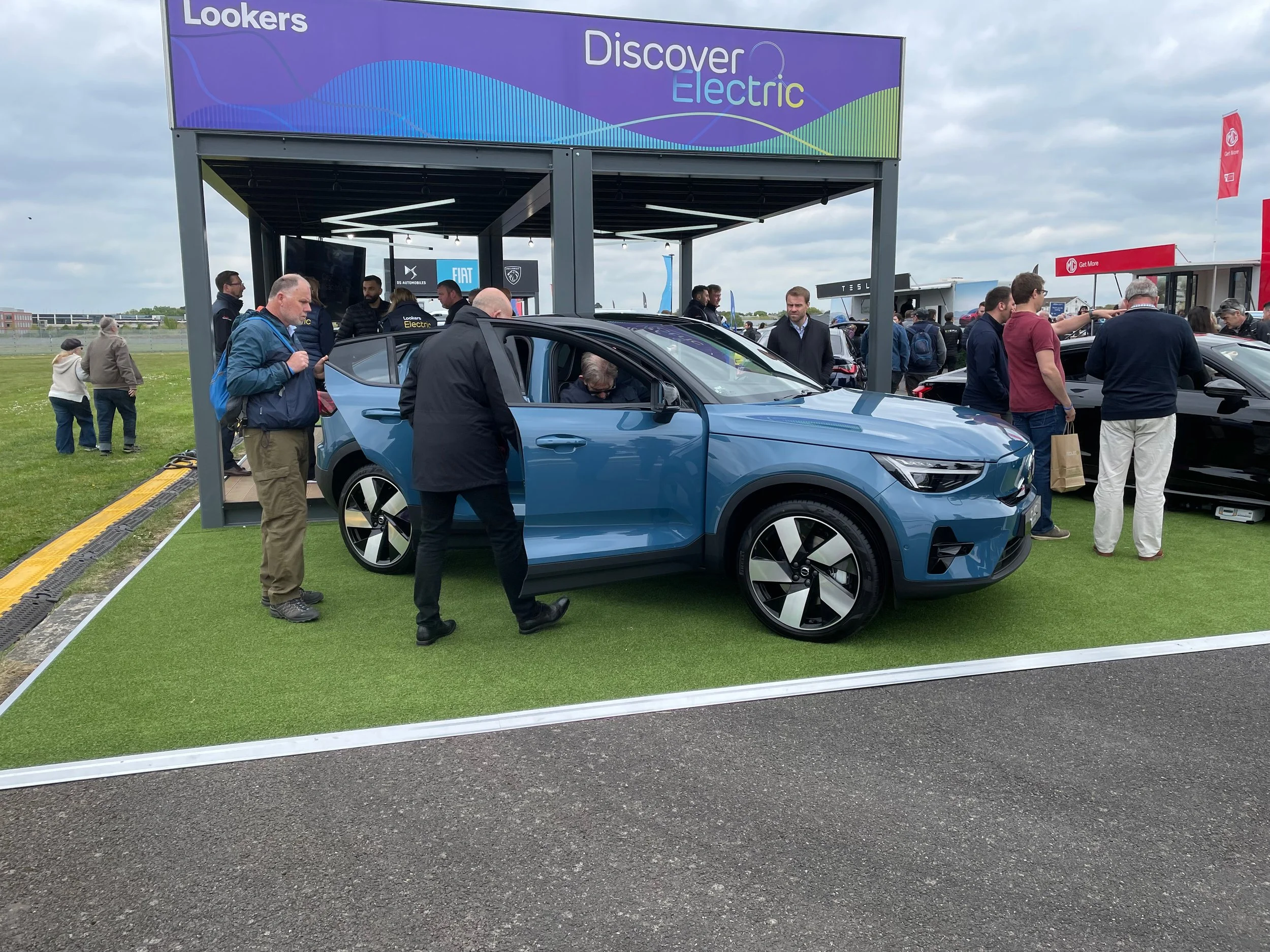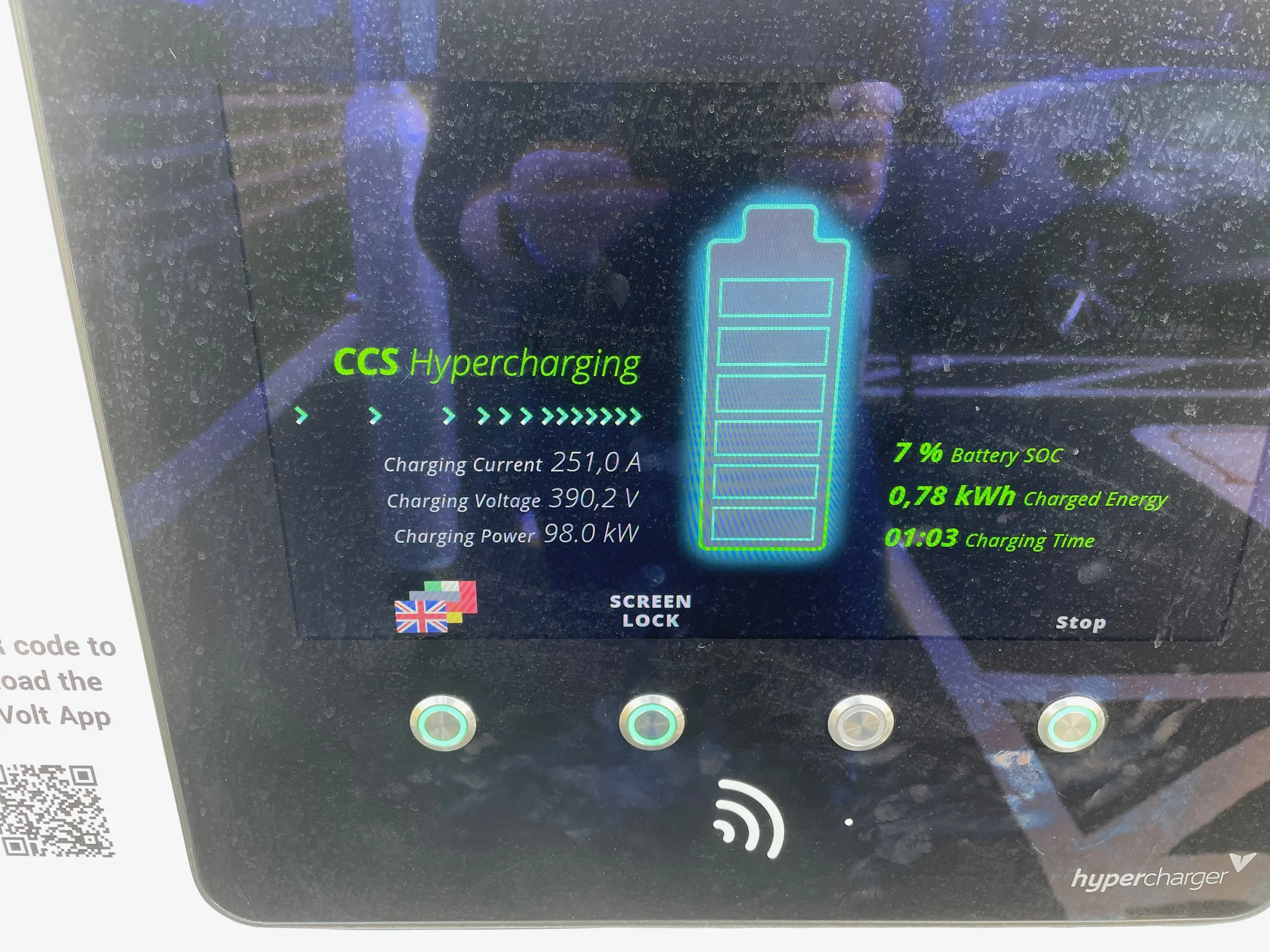I thought it was worth posting up a journey report for my last trip. The two things that differentiate it from a more run-of-the-mill long journey were the destination and going deep into the remaining range. I find my approach to long journeys in my EV is still in a state of flux. I have more confidence now in the car’s capabilities and all those range-affecting variables are starting to burn into my mental range calculator. The supply side of the charging infrastructure is also continually improving. The charger rollouts are happening at pace and the machines themselves are getting faster, easier to use and more reliable. The primary doubt is now the demand side. The percentage of new vehicles sold that are EV or Hybrids continues to rise in the UK. That is great news until you need to charge. The main issue in the UK is the major motorway trunk routes that I needed to use on this trip. Gridserve has done some welcome quick fixes to the Electric Highway network it took over recently. The Electric Highway originally had a monopoly on the motorway network. However, it is going to take a lot longer to expand Gridserve’s “electric forecourt” model to all these sites. The space dedicated to fossil fuelling is still much greater and underutilised due to fuel being really expensive in these “monopoly” locations (£1.95/l or $9/USG). I have not found a site yet that has given a thought to queueing and the etiquette for such situations has not yet developed.
The destination was the Fully Charged Live Show which, this year, was being held in Farnborough Exhibition Centre. Farnborough is an airport just to the South West of London most famous for its Air Show. It is over 200 miles and two notorious traffic congestion points away from where I live. That means that it is at the limits of my range when starting off on a chilly morning at 4:30 am. I planned two stops, one on the outward leg and one on the way back. Both of these would be at the same location at Banbury. This charging site is run by Instavolt, one of our most reliable providers. It had been recently upgraded from 8 to 16 rapid chargers. I used A Better Route Planner (ABRP) to work out how much charge I needed for each stop.
My first leg was slightly marred by a navigational error. I blamed ABRP which has a less clear UI in navigation mode than Apple Maps…but a “bad workman blames his tools”. It meant I missed my turning and had to do a 25 mile circuit to get back. The detour took me passed Cherwell Valley motorway services, but even this early, the chargers there were occupied. Back at Banbury, I joined just one other car, another I-PACE, at the charging station. I was using one of the original 8 chargers and he was on the new type. I tried for a sneaky look at the charging stats as the other Jag was unattended but the screen was asleep.
Charging receipt for first stop
I was fully charged at the start from my 5p/kWh home charger. The first leg had been 145 miles of mixed country roads and motorway. It had taken 2hr 41m at an average 57mph and 2.6mpkWh. I started at 27% and started charging at 77kW (compared to a theoretical maximum of 100kW for the car and 125kW for the charger). I went off to get a coffee at the nearby cafe. ABRP said I needed 88% but I had less charge on my arrival than predicted due to my unnecessary detour. As a result, I hit 88% in 50 minutes (ABRP had predicted 26m) at a cost of £25.09. The wait was no hardship though. A guy pulled up in the next but one bay in an Ioniq 5 (good etiquette there as the old chargers share capacity in pairs). We ended up chatting and he was also on his way down to the show. We swapped car stats, stories and our hopes for the show. These conversations happen a lot I find. I am not known for being gregarious, but there is still a whiff of being a pioneer about being an EV owner. Whereas a petrol station forecourt is like an elevator or Tube train, (no-one speaks or makes eye contact) - an EV forecourt is a place where you can give or receive advice. Whether this will survive queueing I don’t know.
I went to Apple Maps for nav from this point and it took me the motorway route to Farnborough. London’s notorious orbital motorway, the M25, was in a good mood and I made it to the outskirts of Farnborough just before the opening time at 10 am. Unfortunately, Fully Charged has become a victim of its own success. Progress from that point was glacial. The last few miles took over an hour. This meant I took about a 5% bite out of my energy contingency. The trip stats were 90 miles in 2h 56m at 33mph and 2.6mpkWh.
I won’t go too much into the show itself except it was the biggest so far. At the first one I attended in 2017 there were just a handful of EVs (the I-PACE had just launched) and a smattering of hybrids. Now there are dozens of EVs to see in all shapes and sizes. The Home Energy side of the show was much stronger now they could use the inside space.
Fully Charged Live 2022
My legs gave up on the show just before 4 pm. They were still a bit stiff from a coastal walk I had done earlier in the week. Apple Maps decided to send me a shorter but more urban route back. I was good with that as it was only 9 miles less than my predicted range. So I had massive range anxiety, right? I had some, but not as much as you might think. I had faith in what the car was telling me. Jaguar has tweaked the GOM algorithm in updates and it’s pretty good now. I knew that it was now warmer, the route played to an EVs strengths and I could bail out early if necessary. The big factor though was those 16 chargers. I didn’t need to worry about them being busy or not working - there was plenty of redundancy. It is not range anxiety EV owners have - it’s charging anxiety. All I needed to do was not take any wrong turning again.
Given the time, the traffic was predictably heavy, but not too static. The focus on navigation kept the tiredness from the early start at bay. I made it to the M40 and just tweaked my speed for this last 45 mile stretch to keep 10 miles in the bank. In the end, I arrived with 15 miles (7%) to spare. This leg was 80 miles, took 1h 53m at 45mph and 2.9mpkWh. The newer Instavolt chargers have a slightly fussier start-up, though both only require a contactless payment. No messing around with apps and RFID cards. It seemed like it was going to be worth the effort, as this 150kW charger started pumping 98kW into the Jag. I headed over to the cafe for a comfort break and some nourishment. ABRP said I needed 75% to be able to get home with my default 20% margin. 20% seemed like a real luxury now, but both the main potential routes home looked choked, so I was in no hurry. It took me 40 minutes to have my break, triage my email and wander back to the car. In that time I was up to 72% and 54.6kWh had been added for the princely sum of £27.36.
New Instavolt charger at Banbury hits the maximum charge rate for the I-PACE
Time for the last leg. I chose the same route home that I came in on. It did mean running the gauntlet of M6 traffic and then a twisty, single carriageway. It is the most direct route, but would be busier than my very early outward leg. My reasoning was that getting too relaxed when you had been up 14 hours was probably a bad idea. I could hopefully use the Jag’s performance to see off slow traffic if required. The final leg got me home just before 9 pm, a few minutes earlier than Apple Maps predicted. This leg was 121 miles in 2h 23m at 54mph and 2.9mpkWh. I had 44 miles (17%) range remaining.
So in summary, the whole trip took 9h 53m driving time to cover 437 miles at 44mph. I added 104.8kWh to the car at a cost of £52.45. Topping back up would take 70kWh at a cost of £3.50 bringing the total to £55.95. It is also worth noting that the car regenerated 16kWh on the journey which cost me nothing in time or money. I find this offsets the losses you get between what the charger measures and how much ends up in the battery.
My alternative would have been to go down in my camper van. On a full tank it does not need to stop, but I definitely still would. My stops would have been shorter and could have been anywhere the camper could park. The ability to maintain a high average speed though is not in the same league as the Jag. Overtaking in the van on the A41 is an exercise in pure courage. My fuel costs would have been £115, £130 if I had made the mistake of using the motorway services. I accept that is a bit of an extreme case and not the right way to use the van. However, my last car ( BMW 530d) that could have covered the journey with the same comfort levels as the Jag would have still cost £80 and added 130Kg of CO2 to the atmosphere.
What is my summary of this long journey in an EV in spring 2022? My first point is that having sufficient fast, reliable chargers at a location removes range anxiety. Unfortunately, we still have some way to go before locations like Banbury are ubiquitous. My main stresses during the trip were getting annoyed with myself for poor navigation and queueing for the Show. The Jag is an easy place to do miles in because of its refinement and effortless performance. I could have done the journey without stopping in an ICE vehicle and saved 90 minutes but not without costs to my wellbeing, my wallet and the environment. In reality, I probably would have only saved 30 minutes - less if I had been on my A-game with navigation.



